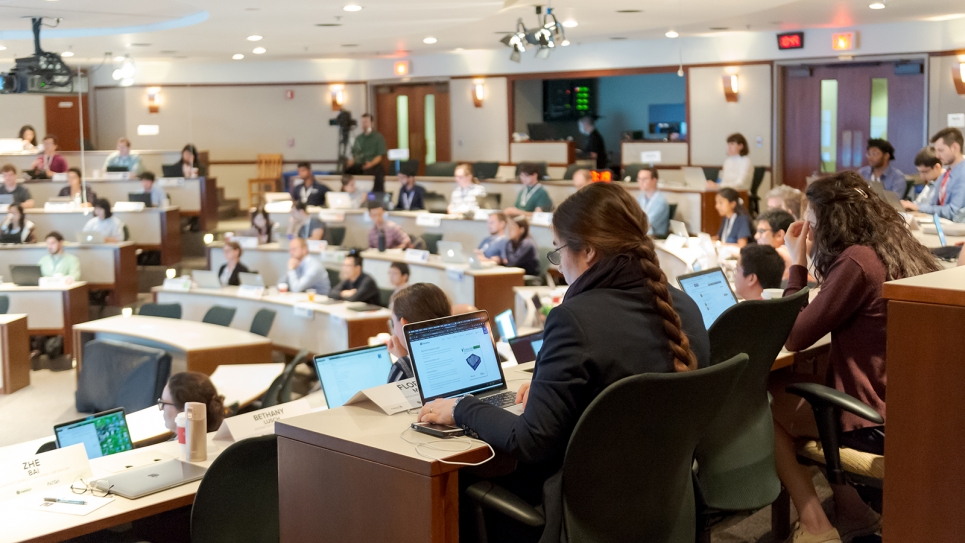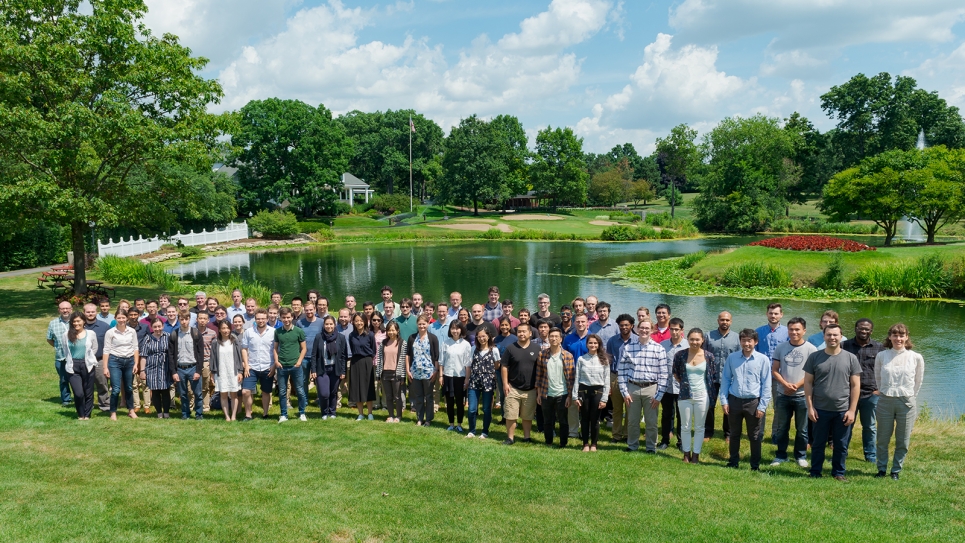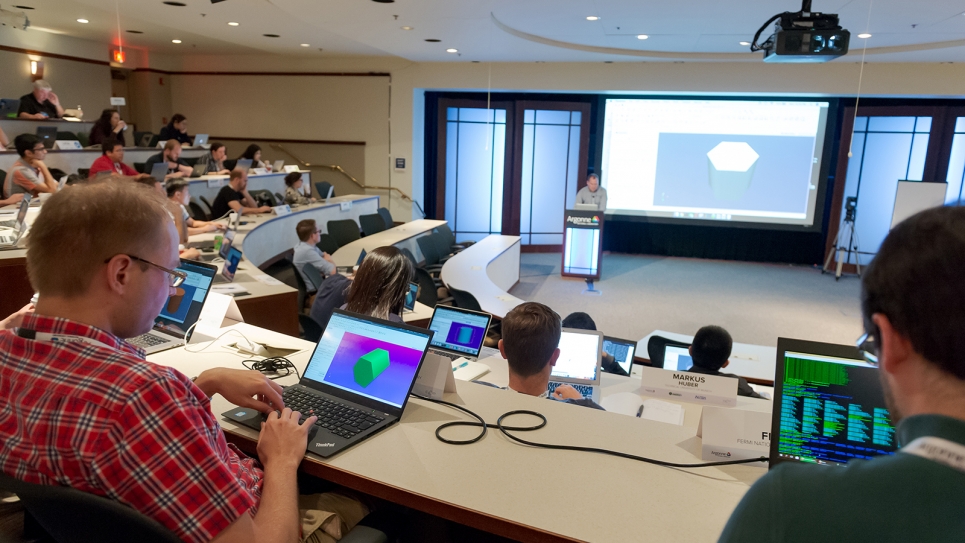“Most people are not exposed to the breadth of HPC tools and topics in their degree programs,” added Cyrus Harrison, an LLNL scientist who lectured on visualization and data analysis. According to Harrison, ATPESC is valuable and successful, bringing together vast knowledge for the HPC discipline.
Daniel Barry, a Ph.D. student in Data Science and Engineering at the University of Tennessee, Knoxville, agreed, “ATPESC is an absolutely fantastic opportunity for anyone who wants to refine their skills or learn certain areas of HPC more thoroughly.”
Before attending ATPESC, Barry tried to learn more about software tools for supercomputing via online documentation, but this approach was not as productive as the ATPESC experience. “A lot of explanations I’ve seen online are missing the crucial details that make a difference in understanding the nuanced scenarios that occur in the codes for high-performance computational workloads. ATPESC has been designed in such a way that is easy to understand and program effectively in these scenarios.”
Even the lecturers gained from their student interactions. “It’s a lot of fun for the whole track team to interact with the attendees,” said Argonne senior computational scientist Lois Curfman McInnes, who coordinates the track on numerical algorithms and software for extreme-scale science. “I enjoyed learning about the experiences and interests of the attendees and how their new directions can impact our research.”
Although the event has limited space, ATPESC’s broad curriculum is available to the public. Each year since its inception, the program has posted lecture slides and videos online. Videos of the 2019 lectures will be available soon. To learn more about the program, visit the ATPESC website.
ATPESC program director García concluded, “What I admire most in the participants every year is their passion, hard work, open-mindedness, creative thinking and dedication to improve their codes and their disciplines ― and to take what they learn and improve our society. On behalf of the 100 volunteers who are involved in the preparation for ATPESC, we wanted to say: Thank you for believing in this program and in its benefit to the scientific community worldwide.”
The Exascale Computing Project is a collaborative effort of two DOE organizations — the Office of Science and the National Nuclear Security Administration. ECP was established to develop a capable exascale ecosystem, encompassing applications, system software, hardware technologies and architectures and workforce development to meet the scientific and national security mission needs of DOE in the mid-2020s timeframe.
Established by Congress in 2000, the National Nuclear Security Administration (NNSA) is a semi-autonomous agency within the U.S. Department of Energy responsible for enhancing national security through the military application of nuclear science. NNSA maintains and enhances the safety, security, and effectiveness of the U.S. nuclear weapons stockpile without nuclear explosive testing; works to reduce the global danger from weapons of mass destruction; provides the U.S. Navy with safe and effective nuclear propulsion; and responds to nuclear and radiological emergencies in the U.S. and abroad. Visit nnsa.energy.gov for more information.
Argonne National Laboratory seeks solutions to pressing national problems in science and technology. The nation's first national laboratory, Argonne conducts leading-edge basic and applied scientific research in virtually every scientific discipline. Argonne researchers work closely with researchers from hundreds of companies, universities, and federal, state and municipal agencies to help them solve their specific problems, advance America's scientific leadership and prepare the nation for a better future. With employees from more than 60 nations, Argonne is managed by UChicago Argonne, LLC for the U.S. Department of Energy's Office of Science.
The U.S. Department of Energy's Office of Science is the single largest supporter of basic research in the physical sciences in the United States and is working to address some of the most pressing challenges of our time. For more information, visit https://energy.gov/science


